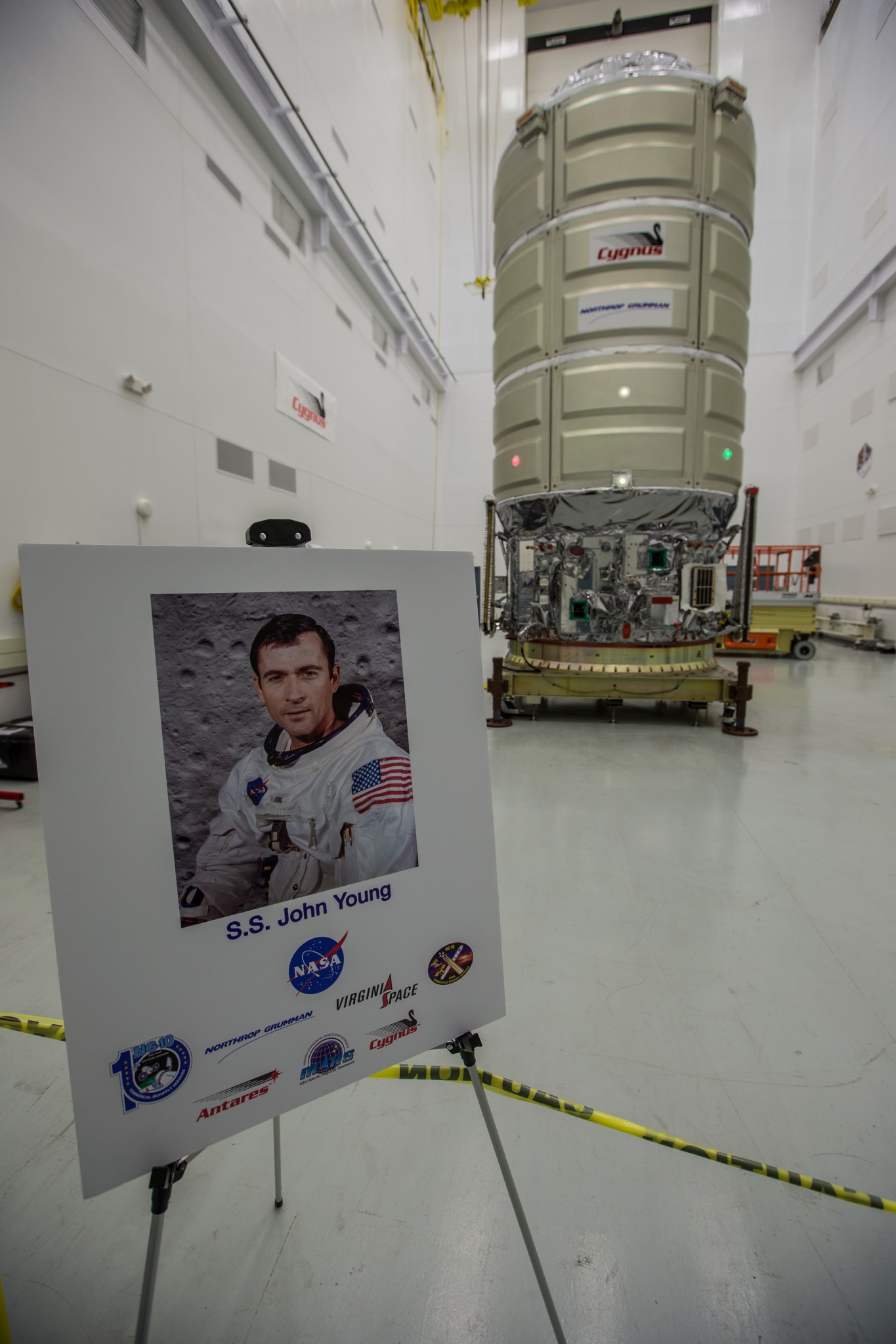The next Northrop Grumman Cygnus spacecraft to travel to the International Space Station has been named for NASA astronaut and U.S. Navy officer John Young.
Rick Mastracchio, senior director of Operations, Commercial Resupply Services Program for Northrop Grumman, made the announcement during a Cygnus media day at NASA’s Wallops Flight Facility Oct. 24.
Cygnus is set to launch on the company’s Antares rocket no earlier than 4:50 a.m. EST, Nov. 15, 2018 from the Mid-Atlantic Regional Spaceport’s Pad-0A at Wallops.
As a NASA astronaut, Young logged 835 hours in space participating in six missions: Gemini 3 and 10, Apollo 10 and 16, and STS-1 and 9.
Highlights of space station research that will be facilitated by investigations aboard this Cygnus are:
- An investigation into the complex process of cement solidification to explore how gravity levels like those on the Moon and Mars may potentially affect concrete hardening.
- Research to develop a mathematical model for how an astronaut’s perception of motion, body position and distance to objects changes in space.
- A test of the first integrated 3D printer and recycler to turn waste plastic materials into high-quality 3D-printer filament to create tools and materials, a key capability for future long-duration space missions beyond low-Earth orbit.
Included in the cargo are investigations that will enable U.S. National Laboratory research, which is managed by the Center for the Advancement of Science in Space. They include a physical sciences investigation to evaluate a method for producing fiber optic cable in space and astrophysics research to examine the formation of chondrules, some of the oldest material in the solar system.
Cargo resupply from U.S. companies ensures a national capability to deliver critical science research to the space station, significantly increasing NASA’s ability to conduct new investigations at the only laboratory in space.
Keith Koehler
NASA’s Wallops Flight Facility




























